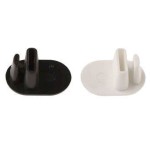Base For Pavers For Patio
When installing pavers for a patio, the base is crucial for ensuring the longevity and stability of the surface. A well-prepared base provides a solid foundation that prevents sinking, shifting, or cracking of the pavers over time. Here's a comprehensive guide on how to create a sturdy base for pavers on a patio:
1. Excavation and Leveling
Begin by excavating the area where the patio will be installed. Remove all existing vegetation, topsoil, and any debris. The depth of excavation depends on the thickness of the base materials and the desired height of the finished patio. Typically, 6-8 inches of excavation is sufficient.
Once the area is excavated, level the ground using a level and a string line. Ensure that the surface is flat and level to prevent drainage issues and uneven settling of pavers.
2. Compacting the Subgrade
The subgrade refers to the prepared soil surface beneath the base materials. Compact the subgrade thoroughly using a plate compactor or a rented tamper. Compacting helps stabilize the soil, reduce voids, and prevent future settling of the patio.
3. Installing a Geotextile Fabric
Lay down a layer of geotextile fabric over the compacted subgrade. Geotextile fabric prevents weeds from growing through the base and into the pavers, ensuring the longevity of the patio. Cut the fabric to fit the area, overlapping the edges by at least 12 inches.
4. First Layer of Base Material
For the first layer of the base, use a material such as crushed stone or recycled concrete. Spread the material evenly over the geotextile fabric, creating a 3-4 inch thick layer. Compact the first layer using a plate compactor or tamper.
5. Second Layer of Base Material (Optional)
If necessary, a second layer of base material can be added to provide additional stability and drainage. This layer can be made of a finer material such as screenings or sand. Spread the second layer evenly, aiming for a 2-3 inch thickness. Compact it thoroughly.
6. Screeding and Leveling
Once the base materials are in place, use a screed or a straight edge to level and smooth the surface. Ensure that the base is flat and level, with a slight slope (1/8 inch per foot) for drainage.
7. Finishing Touches
Before laying the pavers, check the base for any soft spots or irregularities. Address these areas by adding more base material and compacting it. If desired, a thin layer of sand can be added on top of the finished base to create a more level and stable surface for the pavers.
By following these steps carefully, you can create a durable and stable base for your paver patio, ensuring that it withstands the elements and remains functional for years to come.

How To Prep Lay A Base For Pavers Western Interlock

Do S And Don Ts Of Paver Installation Step 2 3 Base Preparation

Paver Installation How Important Is The Base

How To Install A Paver Patio Base Family Handyman

Gator Base Alliance

What Kind Of Base Should You Use For Patio Pavers Installation

Hot Tub On A Budget Plus How To Install Paver Patio Living Rich Less

Hybrid Pavers Poly Sand Over Drainage Stone Without Fabric By Phil Bahler

How To Use Paver Base Panels All You Need Know Js Brick Pavers

Paver Base Panels Vs Gravel Home Garden








